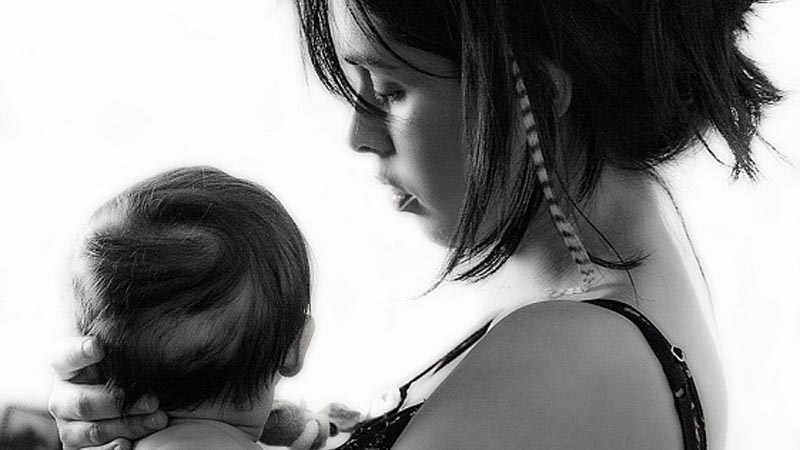Why better screening and treatment are needed for postpartum depression
MDlinx Nov 24, 2022
COVID-19 has drastically affected maternal mental health, driving up rates of postpartum depression (PPD), according to research published by BMC Research Notes.
Shuman CJ, Peahl AF, Pareddy N, et al. Postpartum depression and associated risk factors during the COVID-19 pandemic.BMC Res Notes. 2022;15(1):102.

The increase in PPD rates, coupled with barriers and stigma associated with mental health treatment for expecting mothers, brings attention to the need for better screening and assessment tools, honest discussions with patients about maternal mental health, and better access to treatment, including innovative modalities.
What is PPD?
PPD is considered a mood disorder in the DSM-5 classification, according to research published by Brown Meds-Peds Residency.
Med-Peds B. Postpartum depression: So common, yet so commonly missed. Brown Med-Peds Residency.
It is characterized by having at least five symptoms of depression of at least 2 weeks (or more) in duration during the onset of pregnancy or up to 1 year after delivery.
Research has found that about 85% of women experience some variety of mood disturbances after giving birth, according to the MGH Center for Women’s Mental Health.
Postpartum psychiatric disorders. MGH Center for Women’s Mental Health.
For most women, the symptoms are mild and short-lived, but 10 to 15% develop significant symptoms of depression or anxiety.
PPD usually occurs 1–6 weeks after childbirth and affects up to 25% of mothers, according to the Brown Meds-Peds Residency researchers. It is considered a subtype of depression and occurs within a spectrum of depressive disorders in pregnancy, ranging from postpartum blues (also known as “baby blues”) to postpartum psychosis.
The spectrum of PPD
Postpartum blues, or baby blues, is the mildest form of depression associated with pregnancy and affects approximately 50–80% of women during pregnancy, according to MGH Center for Women’s Mental Health.
Baby blues is characterized by mood swings, anxiety, tearfulness, or irritability.
These feelings usually hit their peak by day 4 or 5 after delivery, with a duration of a few hours or a few days, and typically resolve after 2 weeks. If symptoms last more than 2 weeks, the mother is advised to seek medical care as she may potentially have a more serious mood concern.
Postpartum psychosis is a rare but potentially very serious disorder as it carries a risk of harm to both the baby and the mother. Symptoms generally begin within the first 2 weeks of delivery but can begin as early as 2-3 days after delivery, according to MGH Center for Women’s Mental Health.
Considered the most severe form of postpartum psychiatric illness, postpartum psychosis occurs post-childbirth in approximately 1–2 women per 1,000, the MGH Center for Women’s Mental Health authors wrote.
Early symptoms of postpartum psychosis include irritability, sleep disturbance, and restlessness. Disorganized behavior, moods shifting from depression to elation, delusions, and disorganized or erratic behavior occur in women with this disorder.
Women with postpartum psychosis have reported auditory hallucinations that instructed them to harm themselves or their infant. Due to the risks of suicide and infanticide, this very serious disorder needs to be treated immediately.
Risk factors for PPD
Researchers publishing in StatPearls cited the following risk factors characteristic of women who experience PPD:
Mughal S, Azhar Y, Siddiqui W. Postpartum depression. In: StatPearls. StatPearls Publishing; 2022.
-
Smoking during pregnancy
-
Domestic violence or sexual abuse
-
Poor support system
-
Low levels of oxytocin
-
Difficulties with breastfeeding
-
High-risk pregnancy (includes emergency cesarean section and hospitalization during delivery)
-
History of depression and anxiety
Effects of the COVID-19 pandemic
During the height of the COVID-19 pandemic, expectant mothers had different experiences compared with pregnant individuals pre-pandemic, according to the BMC Research Notes article.
Social isolation, telemedicine OBGYN visits, and the stress of dealing with a COVID-19 infection while pregnant were major concerns for expecting mothers, potentially resulting in increased rates of maternal mental illness.
The BMC Research Notes article’s study of 670 postpartum patients showed an increase in PPD in pregnant women during the COVID-19 pandemic. Over 1 of 3 participants (38.2%) were diagnosed with PPD, a rate that was found to be “notably higher” than pre-pandemic rates, which ranged from 6.5 to 12.9%.
Treatment options
Behavioral therapy and oral antidepressants are mainstay treatments for PPD, according to research. However, all antidepressants are secreted in breast milk, which may prevent women from seeking such treatments.
The FDA approved the brexanolone (Zulresso) intravenous injection as an infusion treatment for PPD in 2019, according to ConsultQD.
Top 10 medical innovations for 2022 unveiled. Consult QD. February 16, 2022.
Administered for 60 hours, the novel therapy—the first medication specifically approved for PPD—uses a neurosteroid to control the brain’s stress responses.
FDA approves first treatment for post-partum depression. FDA. March 19, 2019.
“This treatment design is groundbreaking as it targets the signaling thought to be deficient in hormone-sensitive postpartum depression,” the ConsultQD authors wrote.
The FDA found that the treatment showed benefits quickly, compared with traditional antidepressants, which can take 2–4 weeks to work. However, it does come with side effects such as over-sedation and sudden loss of consciousness as it’s administered.
As a result, this medication is only available at certified healthcare facilities where clinicians can carefully monitor the patient.
What this means for you
Increased awareness of the impact of maternal mental health disorders, including PPD, on the mother and baby, is only the beginning of addressing this issue. Attention needs to be directed toward prevention, including patient education. Clinicians must have open conversations to help bring awareness and education to patients and reduce the stigma associated with mental health treatment in pregnant women. PCPs, including OBGYNs, should not hesitate to consult with psychiatry if they feel that the woman is at risk for PPD.
-
Exclusive Write-ups & Webinars by KOLs
-
Daily Quiz by specialty
-
Paid Market Research Surveys
-
Case discussions, News & Journals' summaries